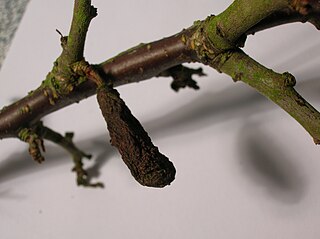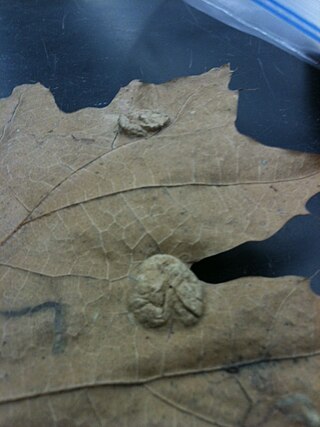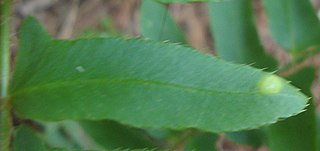
Turmeric or Curcuma longa, is a flowering plant in the ginger family Zingiberaceae. It is a perennial, rhizomatous, herbaceous plant native to the Indian subcontinent and Southeast Asia that requires temperatures between 20 and 30 °C and high annual rainfall to thrive. Plants are gathered each year for their rhizomes, some for propagation in the following season and some for consumption.

Boesenbergia rotunda, commonly known as Chinese keys, fingerroot, lesser galangal or Chinese ginger, is a medicinal and culinary herb from China and Southeast Asia. In English, the root has traditionally been called fingerroot, because the shape of the rhizome resembles that of fingers growing out of a center piece.

Curcuma zedoaria is a perennial herb and member of the genus Curcuma, family Zingiberaceae. The plant is native to South Asia and Southeast Asia but is now naturalized in other places including the US state of Florida. Zedoary was one of the ancient food plants of the Austronesian peoples. They were spread during prehistoric times to the Pacific Islands and Madagascar during the Austronesian expansion. Its use as a spice in the West today is extremely rare, having been replaced by ginger, and to a lesser extent, yellow turmeric.

Peach leaf curl is a plant disease characterized by distortion and coloration of leaves and is caused by the fungus Taphrina deformans, which infects peach, nectarine, and almond trees. T. deformans is found in the United States, Europe, Asia, Africa, Australia, and New Zealand. Peach leaf curl reduces the amount of leaves and fruit produced by peach and nectarine trees.
Leptosphaeria maculans is a fungal pathogen of the phylum Ascomycota that is the causal agent of blackleg disease on Brassica crops. Its genome has been sequenced, and L. maculans is a well-studied model phytopathogenic fungus. Symptoms of blackleg generally include basal stem cankers, small grey lesions on leaves, and root rot. The major yield loss is due to stem canker. The fungus is dispersed by the wind as ascospores or rain splash in the case of the conidia. L. maculans grows best in wet conditions and a temperature range of 5–20 degrees Celsius. Rotation of crops, removal of stubble, application of fungicide, and crop resistance are all used to manage blackleg. The fungus is an important pathogen of Brassica napus (canola) crops.

Taphrina is a fungal genus within the Ascomycota that causes leaf and catkin curl diseases and witch's brooms of certain flowering plants. One of the more commonly observed species causes peach leaf curl. Taphrina typically grow as yeasts during one phase of their life cycles, then infect plant tissues in which typical hyphae are formed, and ultimately they form a naked layer of asci on the deformed, often brightly pigmented surfaces of their hosts. No discrete fruit body is formed outside of the gall-like or blister-like tissues of the hosts. The asci form a layer lacking paraphyses, and they lack croziers. The ascospores frequently bud into multiple yeast cells within the asci. Phylogenetically, Taphrina is a member of a basal group within the Ascomycota, and type genus for the subphylum Taphrinomycotina, the class Taphrinomycetes, and order Taphrinales.

Taphrina deformans is a fungus and plant pathogen, and a causal agent[s] of peach leaf curl. Peach trees infected with T. deformans will experience leaf puckering and distortion, acquiring a characteristic downward and inward curl. Leaves will also undergo chlorosis, turning a pale green or yellow, and later show a red or purple tint. Fruit can either drop prematurely or show surface distortions. Severe infection can also produce lesions on the flowers. The host tree will experience defoliation if the leaves are badly diseased. If a seedling is severely infected, it may die. Almond trees display similar symptoms.
Taphrina ulmi is a species of fungus in the family Taphrinaceae. A plant pathogen, it causes leaf blister galls on elm trees.
Patoleo are stuffed turmeric leaf wraps, a dish which is mostly prepared on the western coast of India. The main stuffing is made from freshly shredded coconut, rice flour paste, and palm jaggery; and cooked by wrapping and steaming in turmeric leaves.

Taphrina pruni is a fungal plant pathogen of blackthorn that causes the pocket or bladder plum gall, a chemically induced distortion of the fruit (sloes), producing swollen on one side, otherwise deformed and flattened fruit gall without a stone. The twigs on infected plants may also be deformed with small strap-shaped leaves.

Taphrina padi is a fungal plant pathogen that induces the form of pocket plum gall that occurs on bird cherry. The gall is a chemically induced distortion of the fruits, which are swollen, hollow, curved and greatly elongated, without a seed or stone, but retaining the style. The twigs on infected plants may also be deformed with small strap-shaped leaves.
Taphrina aurea is an ascomycete fungus that is a plant pathogen. It causes leaf blisters on poplar trees.
Taphrina bullata is an ascomycete fungus that is a plant pathogen. It causes leaf blisters on pear trees.
Taphrina entomospora is a fungal plant pathogen that infects the leaves of Nothofagus. T. entomospora infection results in chlorosis and changes in parenchyma structure of the leaf causing premature senescence. The species was first described scientifically by mycologist Roland Thaxter in 1910.

Taphrina wiesneri is a plant pathogen causing witch's broom, or plant gall formations, on cherry trees. It is an important pest species of the ornamental cherry Cerasus X yedoensis in Japan.

Taphrina caerulescens is a species of fungus in the family Taphrinaceae. It is a pathogenic Ascomycete fungus that causes oak leaf blister disease on various species of oak trees. The associated anamorph species is Lalaria coccinea, described in 1990. This disease causes lesions and blisters on Oak leaves. Effects of the disease are mostly cosmetic. Although not taxonomically defined, strains of T. caerulescens have been shown to be host specific with varying ¬ascus morphology between strains. There are differences in strains' abilities to metabolize various carbon and nitrogen compounds. This has been proposed as a method of taxonomically defining subspecies within T. caerulescens.

Bumbu is the Indonesian word for a blend of spices and for pastes and it commonly appears in the names of spice mixtures, sauces and seasoning pastes. The official Indonesian language dictionary describes bumbu as "various types of herbs and plants that have a pleasant aroma and flavour — such as ginger, turmeric, galangal, nutmeg and pepper — used to enhance the flavour of the food."

Turmeric juice is a form of drink made from turmeric. The demand for turmeric juice has increased in the United States, with imports of turmeric tripling between 2008 and 2014. Turmeric juice has come in numerous forms throughout its history, including drops, milk, elixirs, and blended drinks.

Taphrina polystichi is an ascomycete fungus that parasitizes Christmas fern in eastern North America. It was described by A. J. Mix in 1938.

Taphrina tosquinetii is a fungal plant pathogen that causes large blisters on both surfaces of the leaves of alder.












